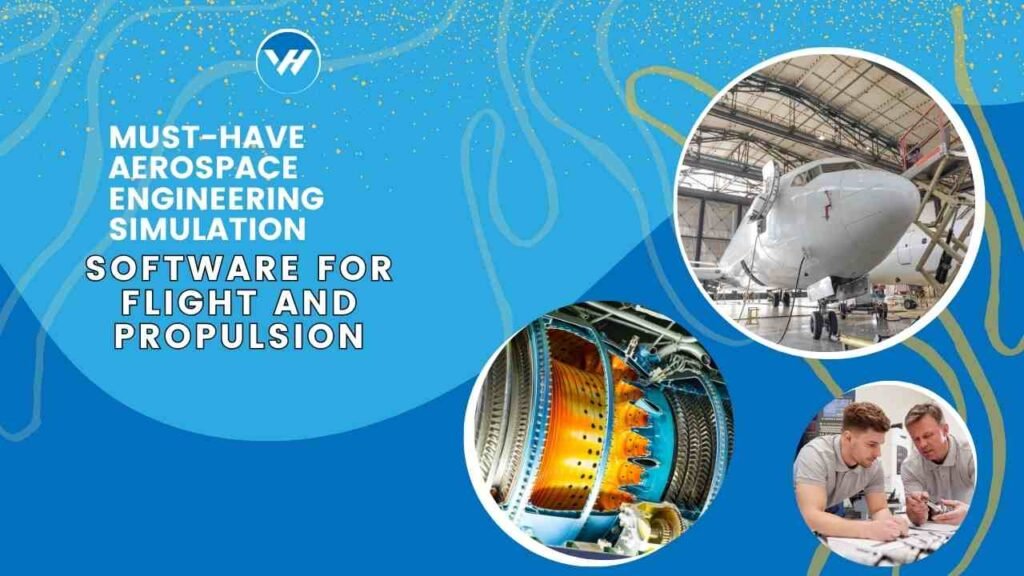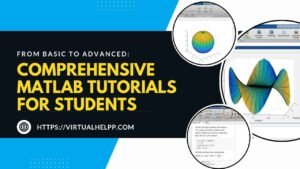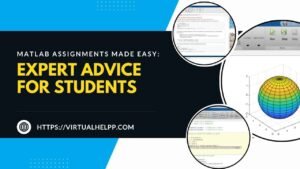Aerospace engineering is an exciting and complex field that combines principles from various engineering disciplines to design, develop, and test aircraft and spacecraft. Simulation software plays a pivotal role in this industry, providing engineers with the tools they need to model, analyze, and optimize their designs before physical prototypes are built. But why exactly is this software so crucial?

Table of Contents
ToggleWhy Simulation Software is Essential in Aerospace Engineering
Enhancing Accuracy in Flight and Propulsion Design
Simulation software allows engineers to create detailed and accurate models of flight and propulsion systems. By simulating real-world conditions and testing different scenarios virtually, engineers can identify potential issues and optimize designs with a high degree of precision. This accuracy is essential for ensuring safety and performance in aerospace applications.
Cost and Time Efficiency
Building physical prototypes and conducting real-world tests can be incredibly costly and time-consuming. Simulation software helps reduce these expenses by allowing engineers to test and refine their designs virtually. This not only accelerates the development process but also cuts down on the costs associated with material, manufacturing, and testing.
Risk Mitigation
In the aerospace industry, safety is paramount. Simulation software enables engineers to anticipate and address potential problems before they arise in real-world testing. This proactive approach helps mitigate risks and ensures that designs meet stringent safety standards.
Key Features to Look for in Aerospace Simulation Software
When choosing aerospace simulation software, several key features should be considered:
High-Fidelity Modeling
The ability to create highly detailed and accurate models is crucial for effective simulation. High-fidelity modeling ensures that the virtual representation closely mirrors real-world conditions, providing reliable results and insights.
Real-Time Simulation
Real-time simulation capabilities allow engineers to observe and analyze the behavior of their designs as they are being simulated. This feature is particularly useful for dynamic and complex systems, where real-time feedback can lead to more effective problem-solving.
User-Friendly Interface
A user-friendly interface is essential for ensuring that engineers can efficiently navigate the software and utilize its features. An intuitive design helps streamline the simulation process and reduces the learning curve for new users.
Integration Capabilities
Integration with other software tools and systems is important for ensuring seamless workflows. The ability to import data from different sources and export results for further analysis can greatly enhance the efficiency of the engineering process.
Top Aerospace Engineering Simulation Software for Flight
ANSYS Fluent
Overview
ANSYS Fluent is a widely used computational fluid dynamics (CFD) software that excels in simulating fluid flow, heat transfer, and other related phenomena. It is renowned for its accuracy and versatility in aerospace applications.
Features
- Advanced turbulence modeling
- Comprehensive turbulence models
- Real-time visualization and analysis
Applications in Flight Simulation
ANSYS Fluent is used extensively to simulate airflow over aircraft surfaces, optimizing aerodynamic performance and predicting the effects of various design modifications.
MATLAB/Simulink
Overview
MATLAB and Simulink are powerful tools for modeling, simulation, and analysis. They are particularly useful for system-level simulations and control systems design.
Features
- Extensive libraries and toolboxes
- Real-time simulation and hardware-in-the-loop (HIL) testing
- Customizable modeling environments
Applications in Flight Simulation
MATLAB/Simulink is often used for designing and testing flight control systems, analyzing vehicle dynamics, and simulating various flight scenarios.
OpenFOAM
Overview
OpenFOAM is an open-source CFD software known for its flexibility and extensive range of applications. It provides users with the ability to customize and extend its capabilities according to their needs.
Features
- Open-source and customizable
- Wide range of solvers and utilities
- Strong community support
Applications in Flight Simulation
OpenFOAM is used for simulating complex aerodynamic flows, including turbulence and multi-phase interactions, making it a valuable tool for flight simulation.
Top Aerospace Engineering Simulation Software for Propulsion
CANTERA
Overview
CANTERA is an open-source software suite for analyzing chemical kinetics, thermodynamics, and transport processes. It is particularly useful for combustion simulations.
Features
- Comprehensive reaction mechanisms
- Flexible thermodynamic and transport property models
- Support for multi-phase and multi-component systems
Applications in Propulsion Simulation
CANTERA is employed to model and simulate combustion processes in rocket engines and other propulsion systems, helping engineers optimize performance and efficiency.
NUMECA
Overview
NUMECA offers a range of CFD software solutions focused on aerodynamic and hydrodynamic simulations. Its tools are used extensively in aerospace and defense industries.
Features
- Advanced mesh generation capabilities
- High-performance computing support
- Specialized solvers for complex flows
Applications in Propulsion Simulation
NUMECA is used to simulate and optimize the performance of propulsion systems, including jet engines and turbines, by analyzing fluid dynamics and heat transfer.
Rocket Propulsion Analysis (RPA) Software
Overview
RPA software is designed specifically for analyzing and simulating rocket propulsion systems. It provides detailed insights into combustion, thrust, and overall performance.
Features
- Specialized propulsion analysis tools
- Detailed combustion modeling
- Performance prediction and optimization
Applications in Propulsion Simulation
RPA software is utilized to design and test rocket engines, including predicting thrust and efficiency, and evaluating the impact of different design parameters.
Comparison of Flight and Propulsion Simulation Software
When comparing flight and propulsion simulation software, several factors should be considered:
Accuracy and Precision
Both flight and propulsion simulations require high levels of accuracy to ensure reliable results. Software with advanced modeling capabilities and precise algorithms is essential for achieving accurate simulations.
User Experience
A software’s ease of use and user interface can significantly impact productivity. Tools with intuitive interfaces and robust support resources can streamline the simulation process.
Integration and Compatibility
Integration with other engineering tools and systems is important for a seamless workflow. Software that supports data exchange and collaboration enhances efficiency.
Cost and Licensing
The cost of simulation software can vary widely. Evaluating the pricing structure and licensing options is crucial for selecting a tool that fits within budget constraints.
Choosing the Right Software for Your Needs
Selecting the appropriate simulation software depends on several factors:
Factors to Consider
- Specific simulation requirements
- Project scope and complexity
- Budget and resources
How to Evaluate Software
Evaluate software by testing its capabilities, reviewing user feedback, and assessing its compatibility with existing tools.
Recommendations Based on Project Type
For flight simulations, tools like ANSYS Fluent and MATLAB/Simulink are highly recommended. For propulsion simulations, CANTERA and NUMECA offer robust solutions.
The Future of Aerospace Simulation Software
Emerging Trends
The aerospace industry is witnessing advancements in simulation software, including increased use of artificial intelligence and machine learning to enhance predictive capabilities.
Advancements in Technology
Future developments include improved real-time simulation, more detailed modeling, and enhanced integration with other engineering tools.
Impact on the Aerospace Industry
These advancements will lead to more efficient design processes, better performance predictions, and reduced development costs.
How Virtual Help Can Assist with Aerospace Engineering Assignments
Overview of Virtual Help
Virtual Help is an app-based platform that connects students with tutors for personalized assistance with assignments and projects.
How It Supports Students
Students can find expert tutors for guidance on aerospace engineering topics, including simulation software and its applications.
Features of the App
The app offers features such as real-time chat, video tutoring, and assignment help, making it a valuable resource for students seeking academic support.
Conclusion
Simulation software is a critical tool in aerospace engineering, providing the accuracy, efficiency, and risk mitigation needed for successful flight and propulsion design. By choosing the right software, engineers can enhance their design processes and contribute to advancements in the aerospace industry. For students seeking support with their aerospace engineering assignments, Virtual Help offers a valuable resource to connect with expert tutors and gain the assistance they need.
FAQs
What is aerospace engineering simulation software used for?
Aerospace engineering simulation software is used to model and analyze the behavior of flight and propulsion systems, helping engineers optimize designs and predict performance.
How does simulation software improve flight and propulsion designs?
Simulation software enhances accuracy, reduces development costs, and mitigates risks by allowing engineers to test and refine designs virtually before physical prototypes are built.
What features should I look for in simulation software?
Key features include high-fidelity modeling, real-time simulation, a user-friendly interface, and integration capabilities with other tools.
How can Virtual Help assist with aerospace engineering assignments?
Virtual Help connects students with tutors for personalized assistance with assignments, including guidance on simulation software and its applications.
Are there free simulation software options available?
Yes, there are free and open-source simulation software options available, such as OpenFOAM and CANTERA, which offer robust capabilities for aerospace engineering applications.





